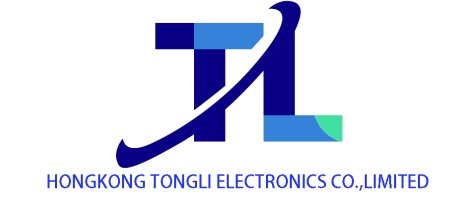The Storage Industry Embraces Multiple Transformations: Shortages, Price Hikes, Technological Upgrades, and Giant Layouts
Recently, the global storage industry has been witnessing frequent movements. From DRAM shortages leading to module manufacturers suspending quotations, to the upcoming launch of new technical standards, and the accelerated layout of leading enterprises, the industry is ushering in a new wave of transformation.
The trend of DRAM shortages and price hikes has spread from the upstream to the downstream, and the price increase wave continues to escalate. Two major storage module manufacturers, ADATA and Team Group, have simultaneously suspended quotations. This is the first time such a situation has occurred in the industry since 2017, and the suspension is expected to last until mid-October. Manufacturers have taken this move due to insufficient supply sources. It not only aims to control inventory and adjust the distribution method, but also because they are optimistic about the subsequent price trend and attempt to maximize profits through holding back sales. Suspending quotations may further strengthen customers’ expectations of price increases, trigger a rush to purchase, and at the same time help manufacturers control the pace of shipments and wait for higher quotations. Upstream original manufacturers have clearly announced price increases. In late September, Samsung Electronics issued a notice stating that it plans to increase the price of some DRAM products by 15% to 30% and the price of NAND flash memory by 5% to 10% in the fourth quarter. Enterprises such as SanDisk and Phison have also followed suit to raise product prices, with most increases around 10%.
Price data confirms the industry’s enthusiasm. In the third quarter of 2025, the comprehensive price index of the DRAM market has increased by 19.2%, and the comprehensive price index of the NAND Flash market has increased by 5%. Among them, the monthly increase of NAND Flash in September reached 4.7%, surpassing the 2.6% of DRAM in the same period. Institutions predict that the subsequent price increase trend will be even more intense: Morgan Stanley points out that DDR4 and DDR3 have considerable room for price increases in the fourth quarter, and the contract price of DDR4 may double, with the upward trend expected to continue until 2026; CFM Flash Market predicts that the price of server eSSD will increase by more than 10% in the fourth quarter, the price of DDR5 RDIMM will increase by about 10% to 15%, and the price of 64GB DDR4 RDIMM may even rise by 15% to 20%. NOR Flash will also maintain an upward trend. Driven by the demand for products such as AirPods, the supply gap will expand. For NAND Flash, driven by the demand from data centers, Morgan Stanley predicts that there will be a supply gap of up to 8% in 2026.
Both leading enterprises and domestic forces are taking active actions. Micron Technology’s stock price has increased by more than 50% within the year, and Morgan Stanley has upgraded its rating to “Overweight”. As an important supplier of storage products for AI data centers, Micron has cooperated with NVIDIA, AMD and other companies. Benefiting from the dividend of the AI industry, its quarterly revenue has reached a record high. The news of AMD’s cooperation with OpenAI has also indirectly driven up Micron’s stock price. In addition, Micron plans to build an HBM factory in Singapore, and Korea-US Semiconductor will also establish a subsidiary to cooperate with its capacity expansion. Among international giants, Samsung Electronics and SK Hynix have reached a preliminary agreement with OpenAI to supply storage chips for its “Stargate” project. The demand for this project is expected to be more than twice the current global HBM production capacity.
Domestic storage enterprises have also performed brilliantly. In the first half of 2025, the localization rate of domestic storage chips has increased from 18% last year to 26%. Relying on its independently developed Xtacking architecture, Yangtze Memory Technologies Co., Ltd. (YMTC) has stably mass-produced 294-layer 3D NAND chips. The YMTC Phase III company established in September will add a monthly production capacity of 120,000 wafers. After the production is put into operation, the total production capacity is expected to account for 12% of the global total, and its domestic supply share of high-capacity solid-state drives for AI servers has exceeded 30%. Changxin Memory Technologies (CXMT) has achieved stable mass production of 17nm DRAM, and the 14nm product is expected to undergo trial production at the end of the year. At the same time, the HBM2e product has completed sample testing, which is expected to reduce the cost of domestic AI server manufacturers. The A-share market has responded warmly. On October 9, storage chip concept stocks such as CanSemi and Hua Hong Semiconductor rose by the 20% daily limit, setting new stock price highs.
Good news has also come from the technical level. The JEDEC Solid State Technology Association announced that it will soon complete the UFS 5.0 storage standard. This standard is tailored to the needs of fields such as AI and smart phones. Its sequential performance has been increased to 10.8GB/s, which is more than twice that of UFS 4.x, and the interface bandwidth and data transmission rate have been significantly improved. At the same time, UFS 5.0 integrates link equalization and independent power rail design to improve stability and simplify integration. It also adds built-in hash to enhance security, which will provide strong support for the development of related fields. On the application side, CITIC Securities predicts that high-capacity QLC SSDs are expected to achieve explosive growth in 2026 and become a new growth engine for the storage industry.
